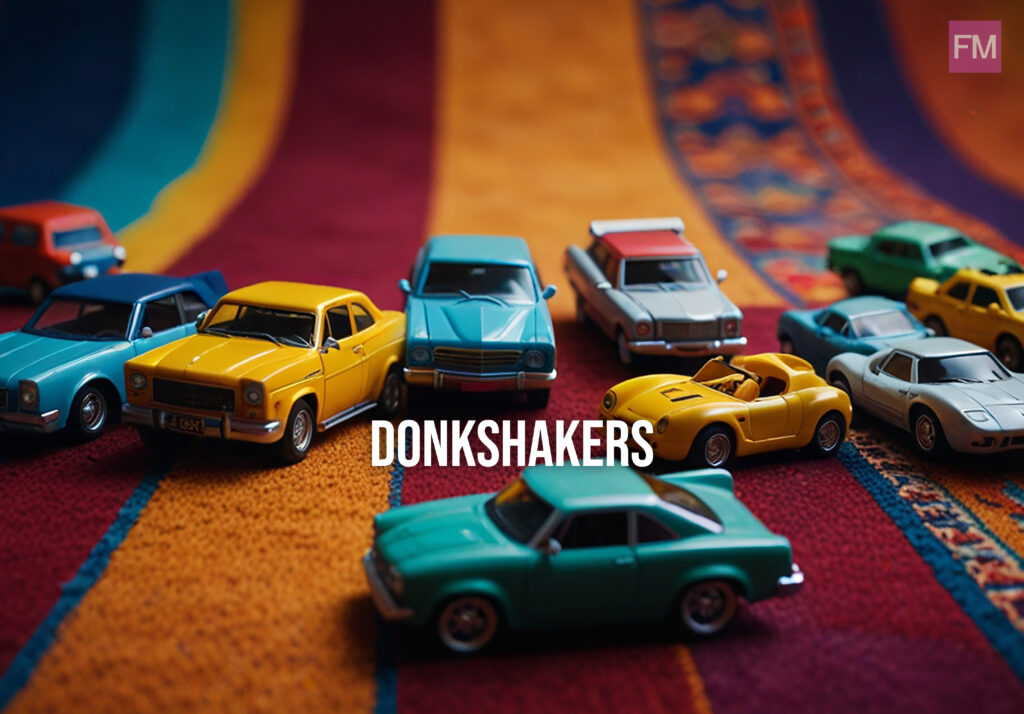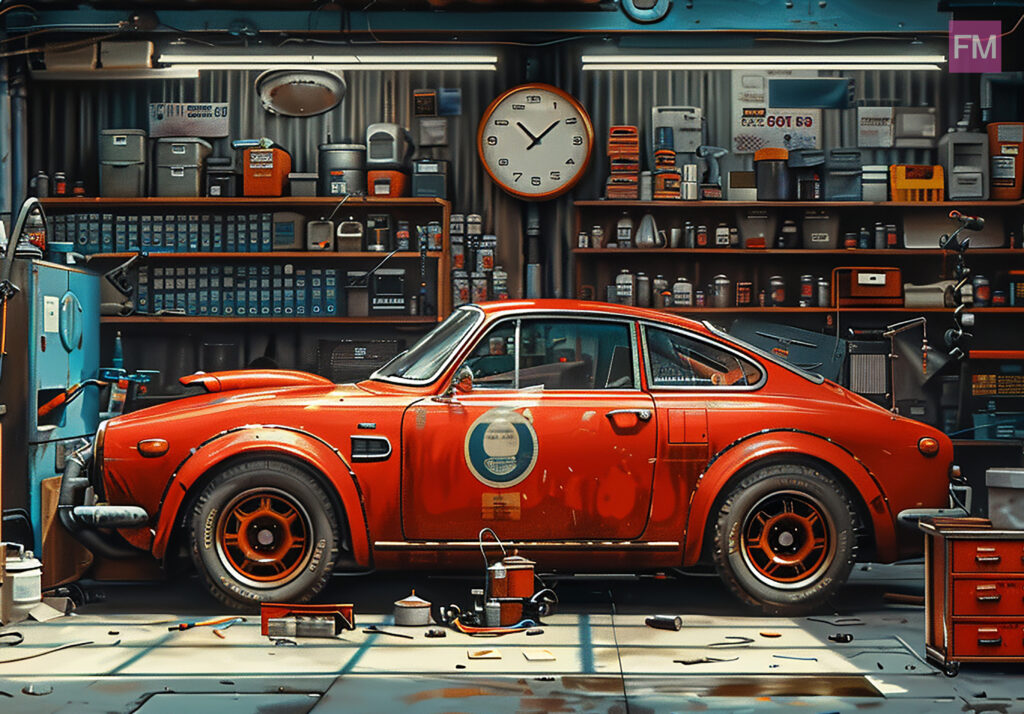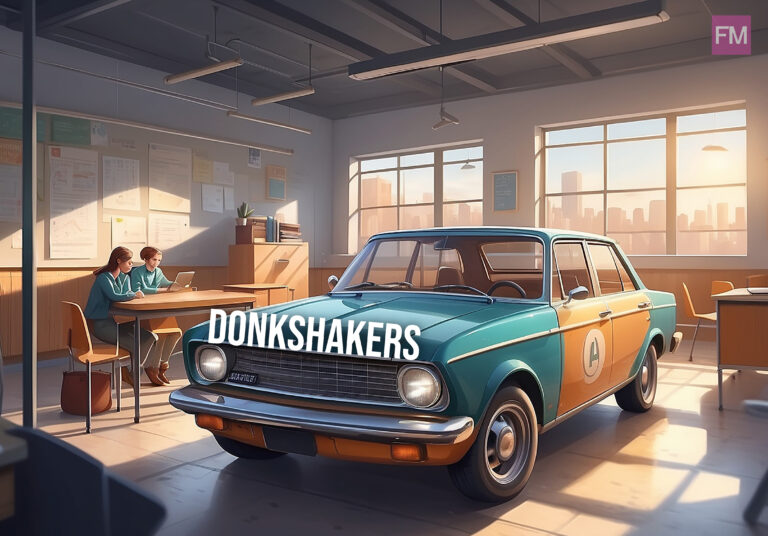Donkshakers are a unique part of car culture, particularly associated with the modification of old-school American cars, mainly from the 1970s and 1980s, with oversized wheels and eye-catching designs. These cars, known as “Donks,” stand out because of their extreme lift kits, large rims (sometimes 26 inches or more), and flashy paint jobs that often feature intricate artwork, candy colors, or even branding from popular products. Donkshakers go beyond just appearance—many of them have powerful sound systems that make the entire vehicle vibrate, earning them their name. The term “Donk” originally comes from the Chevrolet Caprice and Impala models, which are the most commonly modified vehicles in this style. Over time, this movement has gained a cult following, particularly in the southern United States, where car enthusiasts showcase their builds in competitions, parades, and online communities. Donkshakers are more than just customized cars; they represent a bold expression of creativity, personality, and the love of standing out on the road.
Table of Contents
Quick Information Table
| Feature | Details |
|---|---|
| Origin | Southern United States (1990s) |
| Main Vehicles | Chevrolet Caprice, Impala (1970s-80s) |
| Signature Feature | Oversized wheels (26 inches or more) |
| Popular Modifications | Custom paint, lift kits, loud sound systems |
| Cultural Influence | Hip-hop, fashion, street car shows |
| Events & Gatherings | Donk Day, King of the South Car Show |
| Criticisms | Handling issues, legal restrictions, high costs |
| Future Trends | Electric Donks, smart tech, global expansion |
The Evolution of Donkshaker Culture
Donkshaker culture started in the southern United States, particularly in cities like Miami, Atlanta, and New Orleans, where car enthusiasts began modifying classic American sedans with oversized wheels and flashy designs. In the 1990s, hip-hop culture played a significant role in popularizing Donks, with rap artists featuring them in music videos, albums, and street races. Over time, these cars evolved from simple modifications to extravagant builds with custom interiors, neon lights, and even hydraulic systems that make them bounce. The culture expanded beyond just looking stylish—owners began competing in car shows, sound-off competitions, and social media showcases, turning Donkshakers into a recognized and respected automotive subculture. Today, with advancements in car technology, Donkshakers continue to push the limits of creativity, integrating modern features like digital dashboards, high-performance engines, and even electric power conversions, proving that this culture is more than just a trend—it’s an evolving movement.
The Cultural Impact of Donkshakers
Donkshakers have had a major influence on music, fashion, and street culture, with their presence felt in rap videos, urban fashion, and even major auto shows. These cars symbolize individuality and self-expression, allowing their owners to showcase their personalities through bold paint jobs, custom rims, and high-end audio systems. The flashy and exaggerated style of Donkshakers has inspired sneaker brands, streetwear designers, and even video games, making them an integral part of pop culture. Additionally, their popularity has led to collaborations with artists and influencers who use Donkshakers as a way to promote their brands and music, further solidifying their impact. Beyond aesthetics, Donkshakers represent a lifestyle of confidence, creativity, and the pursuit of standing out, making them an enduring part of automotive and urban culture.

The Community Behind Donkshakers
The Donkshaker community is built on passion, creativity, and shared love for customized cars, with enthusiasts coming together at car meets, drag races, and social media groups to showcase their latest builds. Events like Donk Day and the King of the South Car Show bring together thousands of fans who celebrate this unique style, exchanging ideas and pushing each other to create the next big thing. The online presence of Donkshakers is massive, with Instagram, YouTube, and TikTok flooded with videos of these cars in action, showing off their loud engines, giant wheels, and vibrant designs. Unlike other car cultures that focus on performance or speed, Donkshakers prioritize aesthetics and sound, making it a culture where personality matters just as much as horsepower. With more people joining the movement every year, the Donkshaker community continues to grow and evolve, proving that this is more than just a niche—it’s a lifestyle.
Challenges and Criticisms
Despite its growing popularity, Donkshaker culture faces criticism, particularly from traditional car enthusiasts who argue that these modifications ruin the original integrity of classic cars. Some claim that the oversized wheels negatively affect handling, safety, and performance, making these vehicles impractical for everyday use. Additionally, there are legal restrictions in certain areas that limit extreme modifications, such as lift kits and sound systems that exceed noise regulations. Insurance companies also tend to charge higher premiums for heavily modified Donkshakers due to their increased risk of accidents or theft. While critics see Donkshakers as excessive and impractical, enthusiasts defend the culture as a form of artistic expression, a passion project, and a statement of individuality. Like any subculture, Donkshakers continue to face resistance, but the dedication of the community ensures that this movement remains strong.
The Future of Donkshakers
As car modification technology advances, the future of Donkshakers looks promising, with new trends pushing the boundaries of creativity and innovation. Electric Donk conversions are starting to emerge, allowing enthusiasts to maintain the flashy aesthetics while improving sustainability and efficiency. High-tech features like digital interiors, LED lighting, and smart infotainment systems are also becoming more common, blending classic car design with modern technology. The international appeal of Donkshakers is also growing, with car enthusiasts in Europe and Asia adopting and adapting the style in their own ways. With social media driving global exposure and major brands taking notice, Donkshakers are evolving from an underground car culture into a mainstream automotive trend that shows no signs of slowing down.

Conclusion
Donkshakers are more than just cars with oversized wheels—they are a cultural movement that blends creativity, music, and self-expression into a bold automotive statement. What started as a regional trend in the southern U.S. has grown into a worldwide phenomenon, influencing fashion, music, and even digital culture. While the community faces challenges from critics and regulations, Donkshaker enthusiasts continue to push the limits, turning their vehicles into rolling works of art. As technology evolves and new trends emerge, Donkshakers are set to remain a vibrant and ever-changing part of the car world for years to come.
READ MORE : WhatUTalkingBoutWillis.com: Your Gateway to Entertainment, Lifestyle, and More
FAQs
1. What is a Donkshaker?
A Donkshaker is a heavily modified classic American car, usually from the 1970s-80s, featuring oversized wheels, custom paint, and high-powered sound systems.
2. Where did Donkshaker culture originate?
Donkshaker culture originated in the southern United States, particularly in cities like Miami and Atlanta, during the 1990s.
3. Why do Donkshakers have such big wheels?
Large wheels, often 26 inches or more, are a signature feature of Donkshakers, giving them a bold, exaggerated look that stands out.
4. Are Donkshakers legal to drive?
While Donkshakers are legal in many places, some areas have restrictions on modifications like extreme lift kits and noise levels from powerful sound systems.
5. What is the future of Donkshakers?
The future of Donkshakers includes electric conversions, high-tech features, and global expansion, making them more accessible and sustainable while maintaining their unique style.


